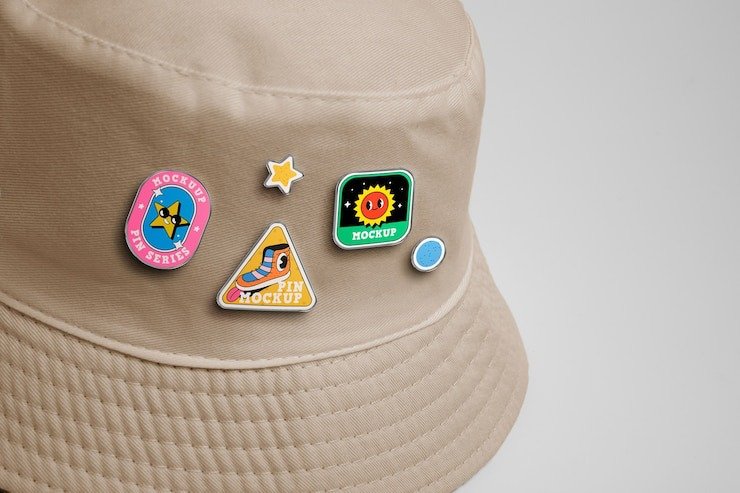Digital Tools for Crafting Perfect Custom Pins
Crafting custom pins has become a popular trend, blending creativity with a tangible product. Whether for businesses, events, or personal expression, they offer a unique way to communicate identity and interests. The advent of digital tools has revolutionized the design and production process, making it more accessible and precise. Here’s a comprehensive guide to the digital tools essential for crafting the perfect bespoke pins.
Digital Illustration Software
Digital illustration software is the backbone of pin design. Programs like Adobe Illustrator, CorelDRAW, and Affinity Designer provide robust platforms for creating detailed, vector-based graphics. These tools allow for intricate designs that can be scaled without losing quality, crucial for maintaining sharpness in the small format of custom pins.
Graphic Design Platforms
For those who may not be professional designers, graphic design platforms like Canva and Crello offer user-friendly interfaces with a range of templates. These platforms simplify the design process with drag-and-drop functionality and extensive libraries of icons, shapes, and fonts, enabling users to create visually appealing designs with ease.
Prototyping Software
Before finalizing a design, prototyping software such as Figma or Sketch can be invaluable. These tools allow designers to create mock-ups and interactive prototypes, providing a clear vision of the final product. They also facilitate collaboration, enabling multiple stakeholders to provide input and feedback during the design process.
Color Matching Tools
Accurate color representation is crucial in design of custom pins. Digital tools like Adobe Color and Pantone Studio help designers select and match colors precisely. These tools offer palettes and color harmonies, ensuring that the final product matches the envisioned hues, which is vital for brand consistency and aesthetic appeal.
3D Modeling Software
For more complex pin designs, especially those involving unique shapes and dimensions, 3D modeling software like Blender or Autodesk Fusion 360 is essential. These programs allow designers to create detailed 3D models, providing a comprehensive view of the pin from all angles. This capability is particularly useful for custom pins with intricate details or unusual forms.
Digital Drawing Tablets
While not a software tool, digital drawing tablets such as Wacom and Huion significantly enhance the design process. These tablets provide a natural drawing experience, allowing designers to sketch directly into their preferred software with precision and fluidity. This tool is especially beneficial for artists who prefer a hands-on approach to digital design.
Online Design Marketplaces
Online marketplaces like Etsy, Redbubble, and Society6 offer platforms where designers can find inspiration and sell their custom pin designs. These marketplaces also feature tools for creating product mock-ups, providing a realistic preview of how the design will look on a pin. This aspect is beneficial for testing market reactions before committing to large-scale production.
Typography Tools
Typography can make or break a design. Tools like FontForge or Google Fonts allow designers to explore and integrate various typefaces into their pin designs. Good typography tools offer extensive libraries and customization options, ensuring that the text on the pin is both legible and stylistically appropriate.
Cloud Storage Solutions
Collaboration and backup are vital parts of the design process. Cloud storage solutions such as Google Drive, Dropbox, and OneDrive provide secure and accessible storage options. These tools ensure that design files are safely backed up and can be easily shared with team members or clients for review and feedback.
Virtual Reality Tools
Emerging technologies like virtual reality (VR) are beginning to impact the design process. VR tools like Oculus Medium or Gravity Sketch allow designers to create and manipulate 3D models in a virtual space. This immersive approach can lead to more intuitive design adjustments and a better understanding of spatial relationships in the pin design.
Laser Cutting Software
For button pins that require unique shapes and precise cuts, laser cutting software like Glowforge or Epilog Laser is indispensable. These programs interface with laser cutting machines, allowing designers to translate their digital designs into physical prototypes with exacting detail.
Heat Transfer Design Tools
For enamel pins, heat transfer design tools such as Cricut Design Space are essential. These tools allow designers to create patterns and designs that can be transferred onto the pin surface using heat press techniques. This method ensures high-quality and durable designs.
E-commerce Integration Tools
For those looking to sell their custom pins online, e-commerce integration tools like Shopify, WooCommerce, and BigCommerce provide comprehensive solutions. These platforms offer tools for setting up online stores, managing inventory, processing payments, and handling shipping. They also integrate with various design tools, making it easier to create product listings and maintain a cohesive brand presence.
Conclusion
The world of custom pin creation is full of potential, thanks to digital tools that make design accessible to everyone. These tools streamline workflows, enhance creativity, and ensure high-quality results. As technology advances, the possibilities for innovative pin designs will expand. Mastering digital tools is a key to crafting perfect custom pins, for both personal and commercial purposes.






